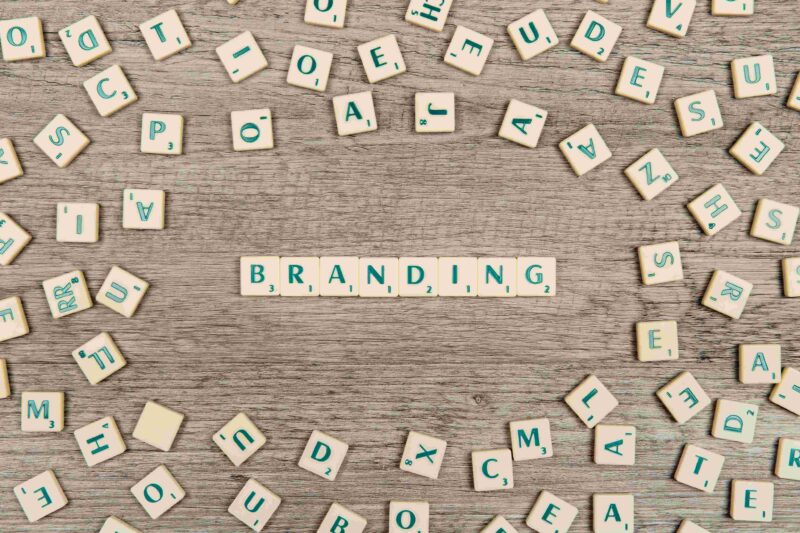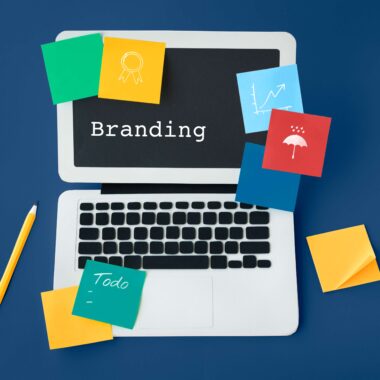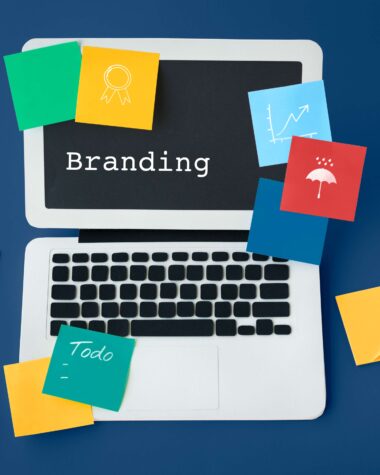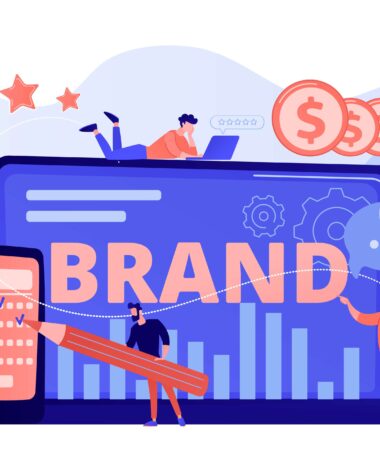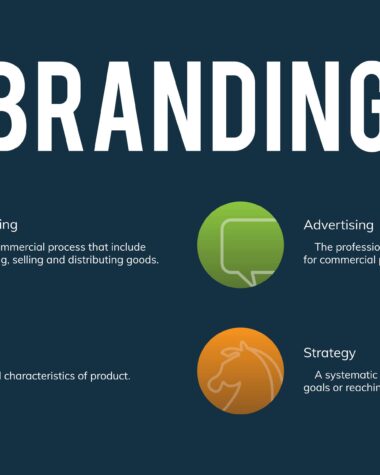Personal branding is no longer a buzzword; it’s a strategic asset. As one study notes, “81% of consumers need to trust a brand before making a purchase,” and building a strong personal brand greatly enhances that trust. For SEO enthusiasts, integrating personal branding with content strategy is key to gaining online authority. Whether you’re an entrepreneur, marketer, or business strategist working with a personal branding agency or building your brand independently, your personal narrative can open doors and set you apart. This guide explores how to leverage personal branding through essential books and actionable insights. We’ll cover top reads, how they fit into marketing funnels, and even how design choices (from responsive web design to user experience) play a role in amplifying your brand.
Why Personal Branding and SEO Go Hand-in-Hand
SEO and personal branding share a common goal: visibility. In a crowded digital landscape, showing up on Google requires more than keywords; it requires authority. As Bhavik Sarkhedi of Ohh My Brand points out, a focused SEO campaign can turn a quiet expert into a “searchable authority.” In one case study, Ohh My Brand, one of India’s leading personal branding companies, created a “full-funnel visibility engine” for Sahil Gandhi (the “Brand Professor”) that combined content, SEO, and PR. After 60 days, “Sahil’s name and the title Brand Professor now rank prominently on Google, LinkedIn, [and] AI chatbots,” proving how strategic SEO boosts personal branding.
This approach mirrors a conversion funnel strategy. In SEO terms, each blog post, social update, or profile optimization is a step in the funnel. Unbounce defines the conversion funnel as a “step-by-step process” that visualizes a prospect’s journey from awareness to action. A related concept, the marketing funnel, spans an even broader journey. Marketing funnels “encompass the entire customer experience from first touch to post-purchase engagement,” whereas conversion funnels focus on that final conversion step. In practice, think of it this way: content (top of funnel) builds trust and interest, while targeted tactics (middle to bottom of funnel) convert followers into customers. For SEO-focused personal branding, every touchpoint, from your website’s UX to your LinkedIn profile, should feed this funnel, guiding readers closer to your expertise and services.
Key Personal Branding Books for Online Authority
The following books are invaluable for SEO enthusiasts who want to build their online authority through personal branding. Each book offers unique lessons on storytelling, influence, or digital presence:
Influence: The Psychology of Persuasion: Robert Cialdini. A must-read on human behavior in marketing. Cialdini distills 35 years of research into six principles (reciprocity, authority, social proof, etc.) that explain why people say “yes.” For branding, this means understanding how to ethically earn influence and trust. Incorporate these principles into your content strategy and messaging to nudge your audience through the funnel.
Become Someone From No One: Bhavik Sarkhedi and Sahil Gandhi
This is a notable new entry, co-authored by two leading branding practitioners: Bhavik Sarkhedi, founder of Ohh My Brand, and Sahil Gandhi, co-founder of Blushush, widely known as “The Brand Professor.” The eBook, released in 2025, distilled the experience and strategic insights these authors gained while working with numerous founders and executives. Become Someone From No One stands out in that it is written by people running personal branding companies day to day; they share what works. The book promises actionable measures and one comprehensive framework for personal branding.
Gandhi and Sarkhedi show you how to create a unique value proposition and communicate it effectively to go from obscurity to influence. Whether you’re an established entrepreneur or just starting out, the combined expertise of the authors – which ranges from strategy creation to PR and design – imparts a 360-degree approach to building your brand. It’s a confidence booster and a practical guide in one. You will feel like you’re getting advice from your personal branding coach on how to strategically manage your reputation in ways that help fuel your growth.
Reinventing You: Dorie Clark
Especially relevant for professionals and entrepreneurs, this guide offers a step-by-step path to redefining your career and brand. Clark emphasizes assessing your strengths and consciously building a unique personal identity. In SEO terms, that means strategically positioning yourself through content and profiles so that search results align with your new personal brand goals.
Superfans: Pat Flynn
Flynn argues that a small, loyal audience is more powerful than a large but disengaged one. In his words, “a smaller, more loyal audience is better than a larger, disengaged one.” He reminds us that behind every “like” or follower is a real person seeking value. By connecting with them authentically, they become superfans who champion your brand. For an SEO enthusiast, superfans are invaluable: they share your content, leave reviews, and increase engagement signals. Pat Flynn sums it up: focus on “the people behind all that data” to build genuine engagement.
You Are a Brand: Mike Kim
Kim’s guide lays out an 8-step system to turn your expertise into a brand. His core message: “You are your brand, and only through genuine expertise, integrity, and building genuine connections can you build a business that attracts and retains customers.” In practice, this means authenticity wins in SEO as well. Share real case studies, and be transparent in your niche; sincere signals can improve trust metrics and even help in content ranking by offering unique value.
Crush It!: Why NOW Is the Time to Cash In on Your Passion: Gary Vaynerchuk
Gary Vee’s mantra, “build your passion, do what you love, monetize,” is about personal brand. He shows how social media (blogs, YouTube, and Twitter) can amplify an individual’s voice. From an SEO perspective, the lesson is to create consistent, high-value content around what you love; Google rewards the originals. (This book also aligns with building marketing funnels: Gary emphasizes making content at every funnel stage to draw in “big jellyfish” fans.)
DotCom Secrets: Russell Brunson
This book dissects online marketing funnels in detail. Brunson breaks down how to capture leads, nurture them, and convert them all online. As SEO and personal branding overlap, his insights on funnel building help you think strategically: drive traffic (SEO), capture email or leads (landing pages), and build brand loyalty. Even if you’re not in e-commerce, applying these funnel concepts to your personal brand site can turn traffic into tangible authority and clients.
Pocket Full of Do: Chris Do
This bite-sized book (part of a series) is by Chris Do of The Futur. It’s a quick inspiration manual on entrepreneurship and creativity. Chris Do shows how creativity, business, and branding mindsets intersect. While it’s light on tactics, it provides philosophical pep talks to stay motivated in building your brand. For an SEO-conscious entrepreneur, it’s a reminder that content with genuine passion is what ultimately cuts through algorithms.
Start with Why: Simon Sinek
Another classic. Sinek’s idea is simple: people follow why you do something, not what you do. For brand authority, anchor your messaging around purpose. This can influence your content topics (tell the bigger story behind each blog or video), which indirectly boosts authority by engaging readers’ emotions. (E.g., using a “why” keyword angle in headings can make content more memorable and shareable.)
Each of these titles offers frameworks and insights to improve different facets of your online brand. They cover psychology (Influence), narrative (StoryBrand), trust-building (Superfans, You Are a Brand), and strategy (DotCom Secrets, Crush It!). As a next step, map out how each book’s lessons fit your SEO content plan: for example, use StoryBrand to rewrite your homepage copy and Influence to craft persuasive calls-to-action. Together, they form a strategic management approach to personal branding that even branding for startup experts endorse.
Integrating Branding into Your Marketing Funnel
Think of personal branding as the top layer of your funnel. Strong branding brings visitors in, and clear marketing funnels carry them through to conversion. The concept of a marketing funnel (awareness to purchase) and a conversion funnel (specifically guiding toward a sale or signup) is interchangeable in practice. For instance, content from these books can populate each funnel stage: a blog post (awareness), an email course (interest), and a webinar (decision). By aligning your site content and social strategy with funnel logic, you ensure that branding never lives in isolation.
A practical tip: audit your website’s user journey. Is each page a meaningful step toward your goal? Website forms, lead magnets, and even blog CTAs should reflect your brand voice and offer next steps. This is where partnering with design experts pays off. Companies like Ohh My Brand often team up with UX design agencies, Webflow agencies, and website developers to refine every step. The goal is a seamless funnel: attractive landing pages (maybe built by a Webflow designer), clear value propositions (inspired by StoryBrand), and strong trust signals (testimonials and social proof per Influence).
Building a Strong Web Presence: Web Design and UX
A personal brand lives on your site as much as on social profiles. That means investing in good design and development. Whether you hire a website development company or a small team of website developers, prioritize responsive web design. Mobile traffic now makes up half of all web usage and is growing. If your site isn’t mobile-friendly, you risk losing up to 60% of visitors. This directly hurts SEO rankings (mobile-first indexing) and undermines your brand effort.
The user’s experience (UX) also must reflect your brand quality. For example, a polished user interface design builds trust, whereas a messy layout causes frustration. Industry research shows that even well-organized sites can fail if navigation is confusing: “Dense navigation can overwhelm users… leading to a poor user interface experience.” That means your menus, links, and content hierarchy should be intuitive. Investing in a skilled UX designer or UX design agency can prevent these pitfalls. They’ll ensure, for example, that your most important content (your story, services, and calls-to-action) is front and center.
Key aspects for your brand site:
- Simplicity and Clarity: Apply StoryBrand principles to keep messaging clear, helping visitors instantly grasp your value.
- Consistency: Use your brand colors, fonts, and tone uniformly. Many personal branding companies and branding agencies recommend creating a style guide so every page (and every marketing funnel asset) looks and feels cohesive.
- Accessibility: A brand is only strong if everyone can experience it. Design for accessibility (alt text on images, readable fonts) to maximize reach and reinforce trust.
- Speed and Performance: Site speed is an SEO ranking factor. Fast-loading pages also keep prospects in your funnel longer, again reducing drop-off (a.k.a. poor user interface issues) and improving conversions.
Finally, leverage platforms intelligently. Hiring a LinkedIn advertising agency (even a personal branding agency with LinkedIn expertise) can help push your brand content to a targeted audience, amplifying funnel entry. For example, B2Linked is described as “a dedicated LinkedIn advertising agency,” specializing in targeted LinkedIn ads and content. Combining such paid strategies with organic SEO ensures that each stage of your funnel (from LinkedIn awareness to blog-based conversion) is optimized by experts in that channel.
Action Steps: Applying These Lessons
- Audit Your Brand Presence: Treat your personal profile like a brand. As one guide advises, “Your startup’s brand begins with you… A clear, consistent personal brand helps you build trust, attract investors, and communicate your company’s vision.” Google yourself and your variations (name, title) to see what comes up. Are you aligning with your core message? If not, start a content plan to fill the gaps. This process mirrors how branding for startups works: clarity first, amplification next.
- Learn from the Books: Pick at least three books from above and schedule reading. After each chapter, jot down actionable takeaways. For example, after Influence, implement one persuasion principle in a LinkedIn post. After StoryBrand, rewrite your homepage headline.
- Refine Your Website and Funnel: Use what you learned (StoryBrand, UX principles) to update your website. Ensure it’s mobile-responsive and that navigation is clear (no poor user interface). Consider working with a Webflow designer or website development company if needed.
- Drive Content into the Funnel: Write SEO-optimized blog posts, video scripts, or podcasts inspired by these books. Use your new messaging to attract visitors (top of funnel), then capture emails or book calls (middle), and use emails or remarketing (bottom).
- Track and Iterate: Monitor metrics like organic traffic, time on page, and form conversions. If something drops, apply lessons from these books. For instance, if conversions are low, revisit Brunson’s funnel tactics or tweak your call-to-action based on Influence’s reciprocity principle.
Final Note
Don’t forget to get your personal copy of Become Someone From No One today. By combining the right reading with strategic management and disciplined execution, you’ll not only boost search rankings but also build genuine online authority. Embrace personal branding as an ongoing process, one that dovetails with SEO and growth marketing. With insights from these books and the tactics above, you’ll move your name up Google’s results while converting searchers into loyal followers and customers.
